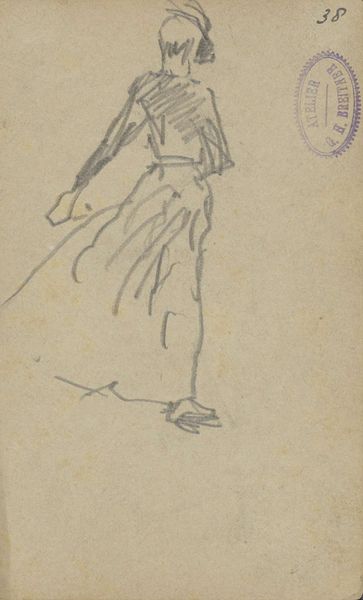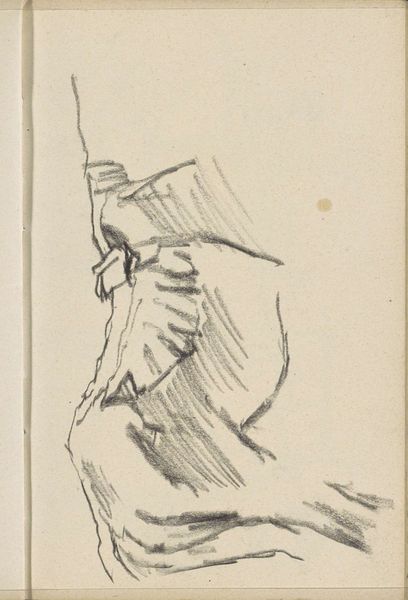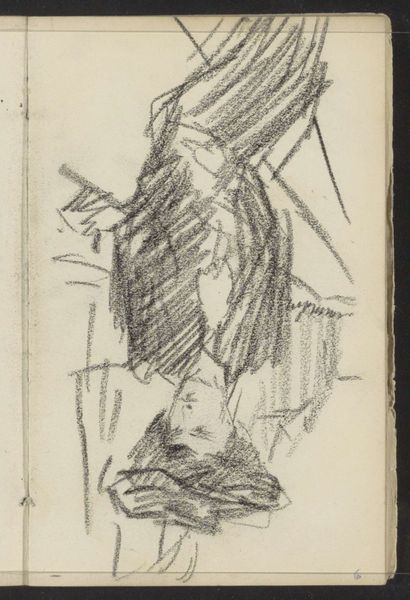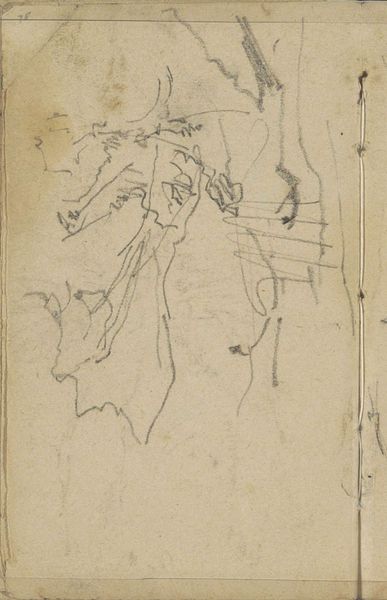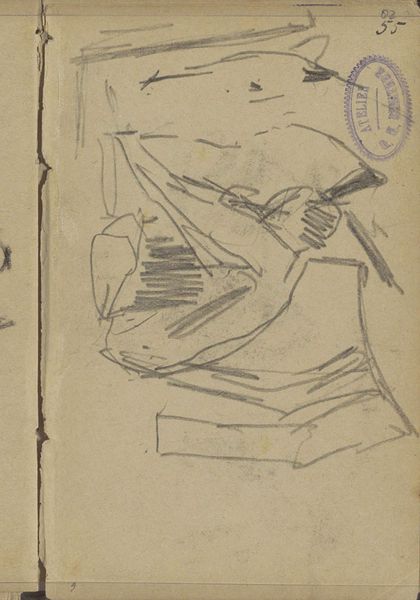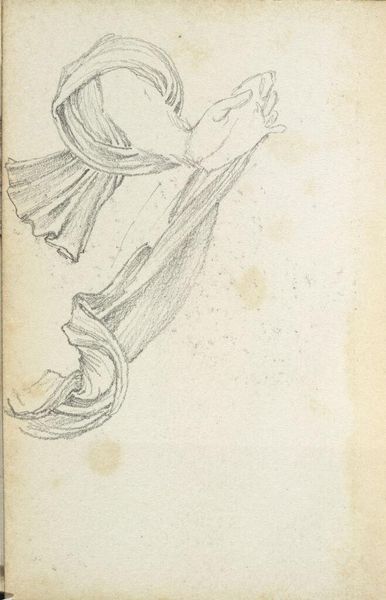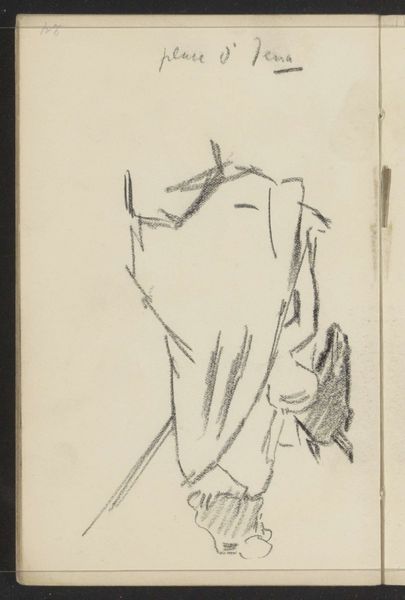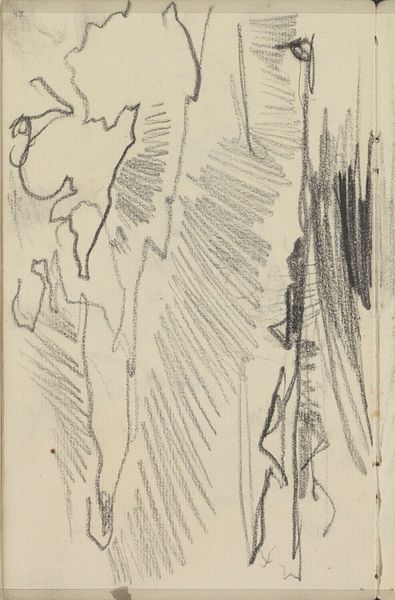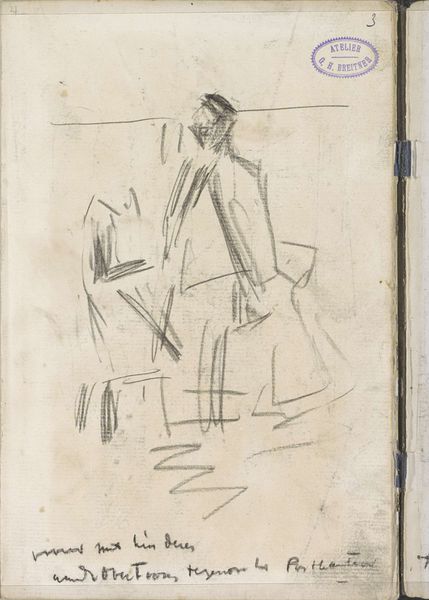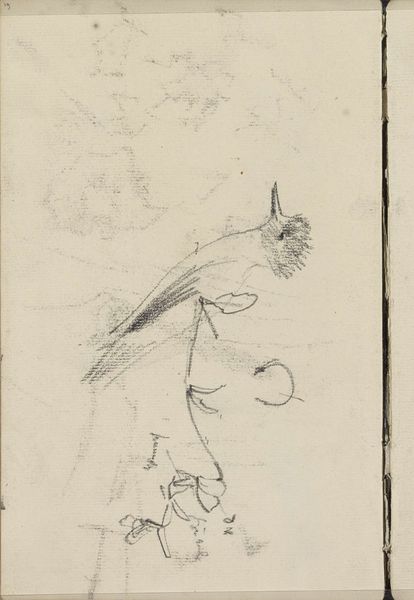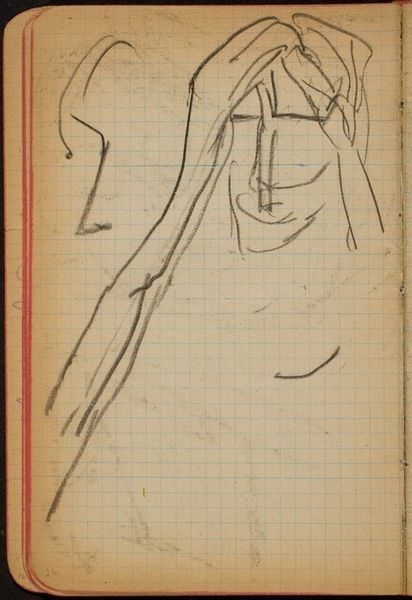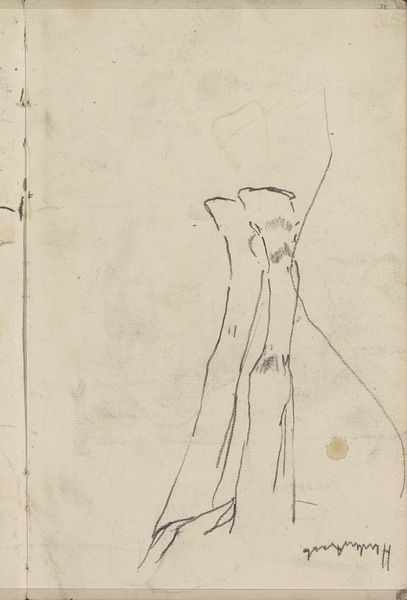
Dimensions: height 128 mm, width 78 mm
Copyright: Rijks Museum: Open Domain
Editor: So, this is George Hendrik Breitner’s "Lopende vrouw," made sometime between 1882 and 1912. It’s a pencil drawing at the Rijksmuseum, and what strikes me is the woman's movement – it's captured so fleetingly. How do you interpret this work? Curator: It's interesting that you focus on the fleeting movement. Breitner, a contemporary of the Impressionists, was deeply engaged with capturing modern life. I see this sketch not just as a portrait, but as a social commentary on women's roles during that time. Notice how the loose strokes dehumanize the subject, treating her instead as part of the gritty street scene that emerged as the Netherlands began its transformation towards modernity. How do the sketchy and rough qualities of this piece speak to the politics of female visibility, of being at once everywhere, and nowhere? Editor: I didn't immediately connect the style to social commentary. It makes sense though, seeing her as part of that changing landscape, almost anonymous. But there are multiple female figures, almost ghostly in the background. Are they of consequence? Curator: They highlight the prevalence of women within this emerging, and frequently dangerous, urban landscape. Are these sketches simply studies, or an insight into the life of a female living within the burgeoning cities and infrastructure in Amsterdam? Did they have a choice but to enter into it, and at what cost? Editor: I see that the artwork isn’t just a beautiful sketch; it reflects on how women were viewed and the roles they occupied during that period. Curator: Exactly! Considering art in its social and historical context deepens our understanding, bringing fresh perspectives to our interpretations. I think this helps to unveil underlying power dynamics that continue to inform today’s societal issues and cultural representations.
Comments
No comments
Be the first to comment and join the conversation on the ultimate creative platform.
